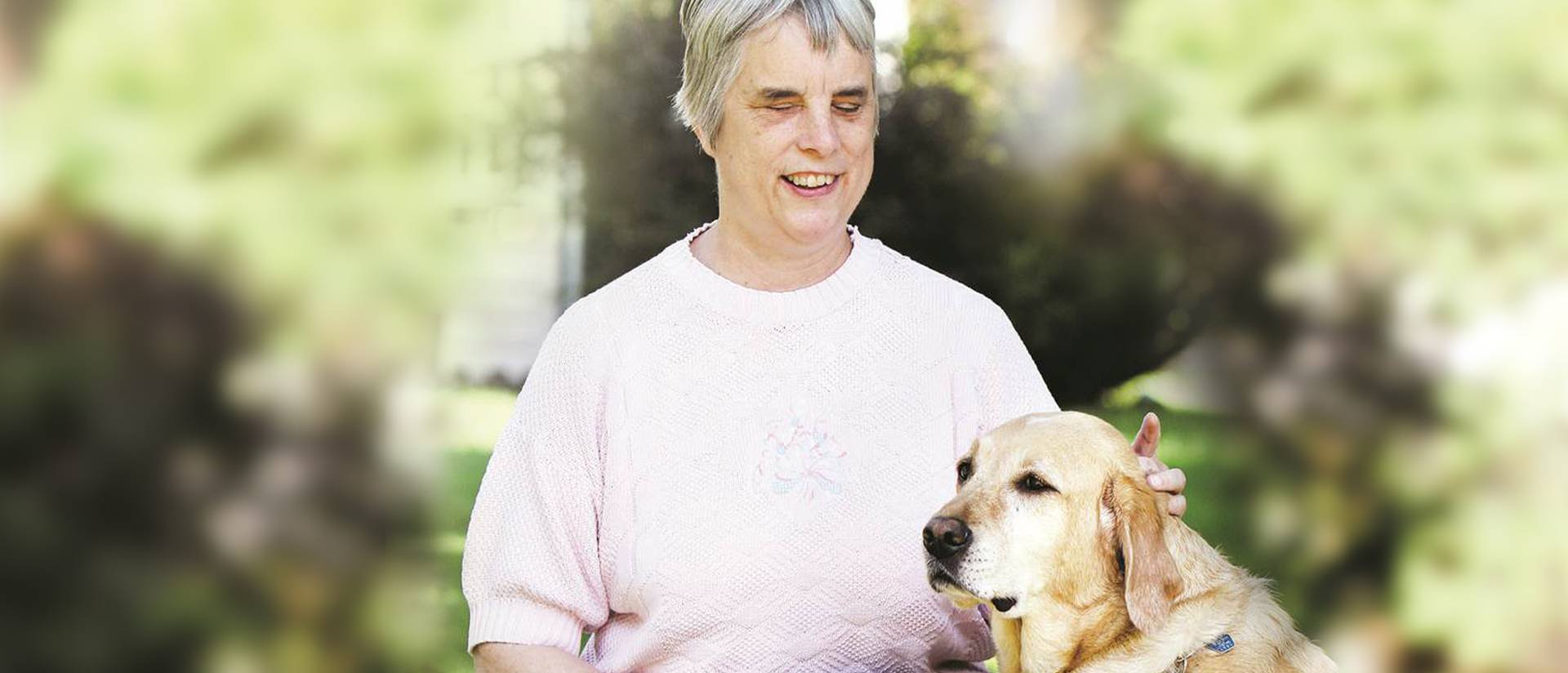
Note: October is National Bullying Prevention Month. All this month we are highlighting resources to help youth—and those who care for them—deal with bullying (online and off). One particularly vulnerable population is youth with disabilities. Those who bully often target those who are perceived to be different than them, and living with a disability is often a very visible marker of difference. What follows is an invited guest post from Dr. Katherine Schneider. I have known Kathie for many years. She retired from my university but is still very active in the Eau Claire (Wisconsin) community. She is a champion for the rights of the disabled, and works tirelessly to make their lives easier. We got to talking one day about my work, and agreed that more could be done to address bullying among those who live with disabilities.
–Justin Patchin
By Katherine Schneider, Ph.D.
I was born blind and grew up in public schools. Hurtful teasing, bullying, and shunning were regular parts of my growing up, and as a result, so was a very low self-concept. I hated being blind. All I knew to do when confronted by bullying was to respond with the old saw about “sticks and stones will break my bones” and tell the bully to “shut up.” Sometimes this worked, but usually not.
Thankfully some things have changed since my adolescence. There are laws like Section 504 of the Rehabilitation Act of 1973 and Title II of the Americans with Disabilities Act of 1990. Both serve to prohibit discrimination at schools (or other public entities) based on disability. There are online resources for parents, professionals, and teens like the Pacer Center’s National Bullying Prevention Center. Parent support groups for parents of children with disabilities and social support/skill building groups for teens with disabilities exist.
Another change is the playground got larger! The online world adds wonderful access to resources and communities, but also new places to be bullied. No longer is the home a respite from bullying.
Some things have not changed. A disability does make its owner more vulnerable because whether it’s physical, cognitive, or emotional, the person has some limitations that a nondisabled person does not have. Those who bully look for differences and weaknesses when choosing a target. Parents, teachers, paraprofessional aides, and therapists need to talk honestly with children who have disabilities about acknowledging limitations, learning social skills, and accentuating the child’s strengths. If the child can’t outrun the bully, for example, perhaps they can use their verbal powers to diffuse the situation (such as with humor), say a loud and clear “stop,” or surround themselves with friends who can deflect the bully’s attention.
Denial at some level still exists about acknowledging what a problem bullying is for people with disabilities. When I was working on my children’s book Your Treasure Hunt: Disabilities and Finding Your Gold, several editors suggested I remove the page about what to do when bullied, because “that doesn’t happen anymore.” Parents fear to ask their child if they’re bullied partly because they know they will be furious if the answer is yes. All that good advice about staying calm and not swooping right in to solve the problem goes right out the window when it’s your child, especially your child who has a disability. The instinct to protect is always there and we want to make their unpleasant experiences go away.
Denial at some level still exists about acknowledging what a problem bullying is for people with disabilities.
We want to solve their problems. But in some cases that isn’t the best response. Listening and giving verbal first aid “That is wrong,” “I’m sorry that happened,” or “I’ll help if you’d like” is the way to go. Help the child brainstorm about what needs to be different next time and role-play techniques to use. Modeling compassionate but firm problem-solving teaches more than lecturing, ranting, or stomping off to confront the parent of the mean kid. Coach the child to ask for the assistance they want. You are teaching skills that will last a lifetime.
We also need to remember that bullying of the disabled (and bullying in general) does not end on graduation day. I recently had two encounters with an adult female bully who I needed to work with on a project. Bystanders were as shocked at her behavior–as I was–and did nothing. The first time I froze, but by the second time I had a caustic verbal retort ready. The bullying has not recurred since then.
Listening and giving verbal first aid “That is wrong,” “I’m sorry that happened,” or “I’ll help if you’d like” is the way to go.
As I was preparing this post, I came upon a book by Melody Beattie, Playing It by Heart, about how to not fall back into being a victim that I plan to read. Memoirs like Temple Grandin’s Thinking in Pictures, and Mark Zupan’s Gimp help teens know it will get better. Books for children and teens are available in alternate formats from www.bookshare.org so that those who don’t read regular print can know they’re not alone and learn ways to deal with the bullying. For me, reading and writing is therapeutic in that I can be in—and help create—a world where there is less bullying and more kindness and empathy. Together we can make a better world, within the pages and beyond.
Dr. Katherine Schneider is a retired clinical psychologist living in Wisconsin with her ninth Seeing Eye dog, Luna. Dr. Schneider has published a memoir To the Left of Inspiration: Adventures in Living with Disabilities and a children’s book Your Treasure Hunt: Disabilities and Finding Your Gold.You can learn more about her work at http://kathiecomments.wordpress.com.







